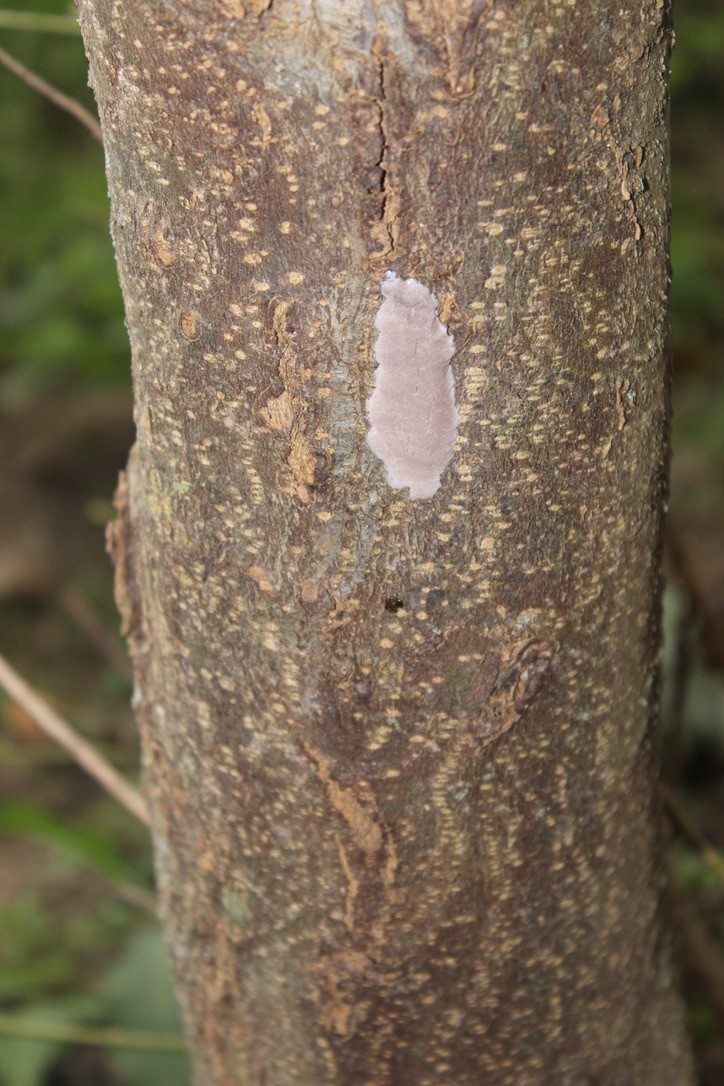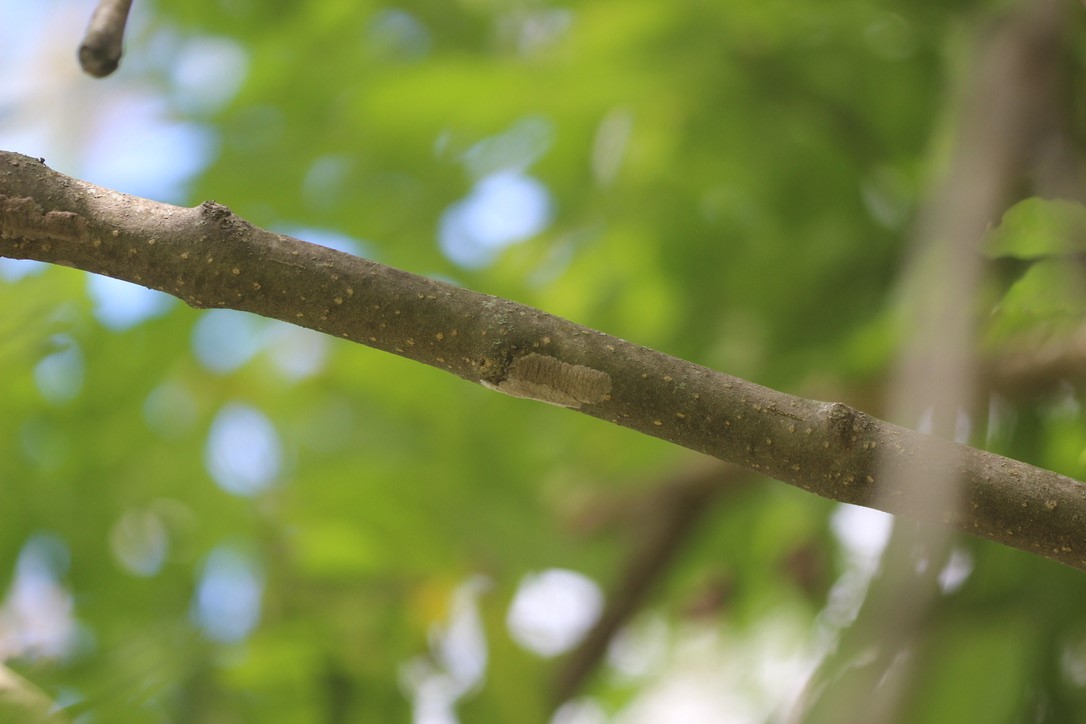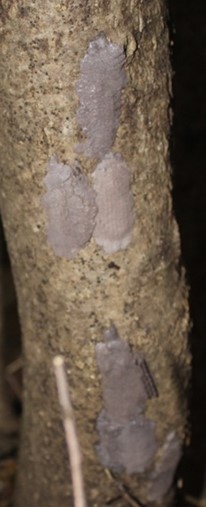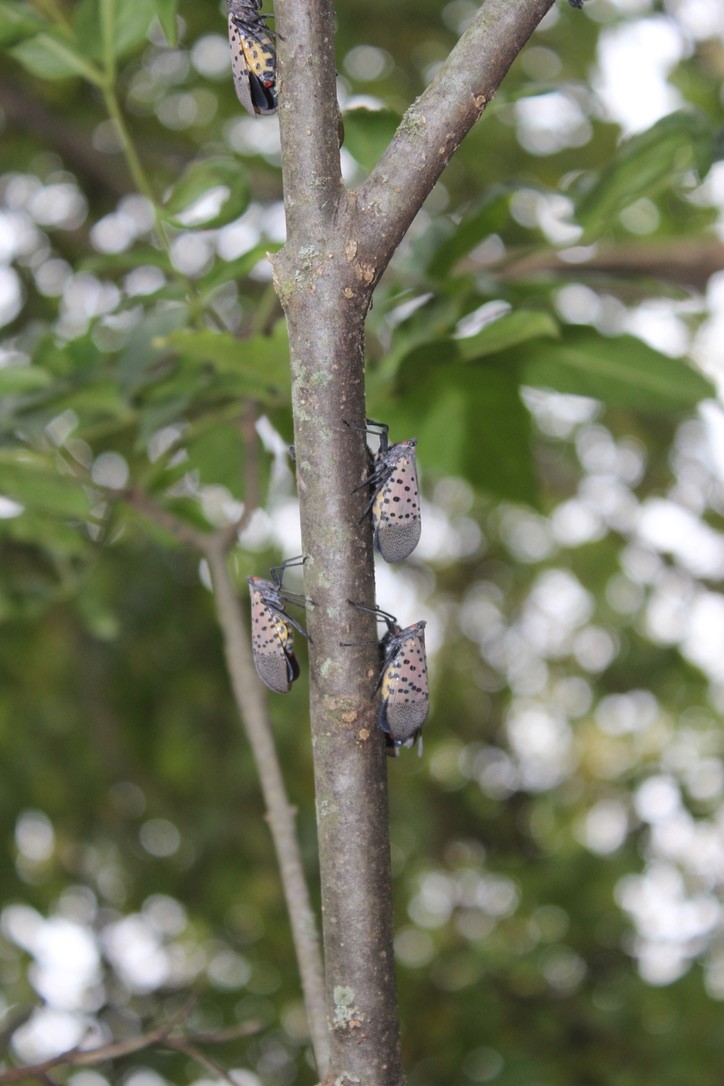 by T'ai Roulston, Curator of the State Arboretum of Virginia
by T'ai Roulston, Curator of the State Arboretum of Virginia
"It's like trying to kill a vampire: Weaken him with sunlight, holy artifacts, and garlic, then stab him a few hundred times and see what happens."
Last year, we found the first spotted lanternflies at Blandy. We squished, squashed, and scraped both bugs and eggs then worked to reduce their favorite host, the tree of heaven, Ailanthus altissima. This is no easy task, as it is one of the most common weed trees in our area. It thrives in vacant lots, roadsides, fields, and light gaps in forests; it finds the corner of your yard that goes uncut and takes over, and when you cut it down, it sprouts a forest of itself. You have to cut and poison it to kill it, or cut it for years, or dig until your blisters have blisters. It's like trying to kill a vampire: Weaken him with sunlight, holy artifacts, and garlic, then stab him a few hundred times and see what happens.
(Photo at left: Spotted lanternflies cluster on a branch.)
So this has been the year of trying to kill Ailanthus. We started with 129 trees planted 9 years ago for research. We cut them all and herbicided the trunks. Then we turned to the wild trees in the area on the eastern border, where we'd found our first lanternflies. Dozens more cut down or girdled and treated. Next came old arboretum specimens. Six stood on Pea Hill, planted in the 1930s as specimen trees before their invasiveness was known. At sunup in April they were large trees silhouetting the sky; at sundown they were sawdust and logs. Then back to more wild areas, girdling the trunks and herbiciding the cuts, trying to cut off the food supply. And yet the lanternflies gather below the cut trunk or girdled bark and feed where they can. We find egg cases low on the underside of a bent trunk, or high where we can't reach, or on the surface of a smooth rock, or the top of a water tank. The new egg cases, pinkish gray and soft as fresh putty, are easily burst with a blunt stick, but as soon as we scrape them clean, new ones form above us, below us, in the next tree, or on a rock around the corner. Its host tree may be Dracula, but the lanternflies themselves are Tolkienian orcs; for each one slain, a hundred more rise from the foul earth to take its place.
So we are not winning this battle, but hopefully, over time, we'll deprive them of the bulk of their preferred host plants and then some parasites will become well established and feed on their abundant and juicy bodies. The lanternflies may seem fast to us, but to the right parasite, they will be slow food, every day Thanksgiving. I doubt we will ever get rid of them entirely, but maybe we can drop them below plague status and keep the native host plants, arboretum specimens, and susceptible crop plants in good shape.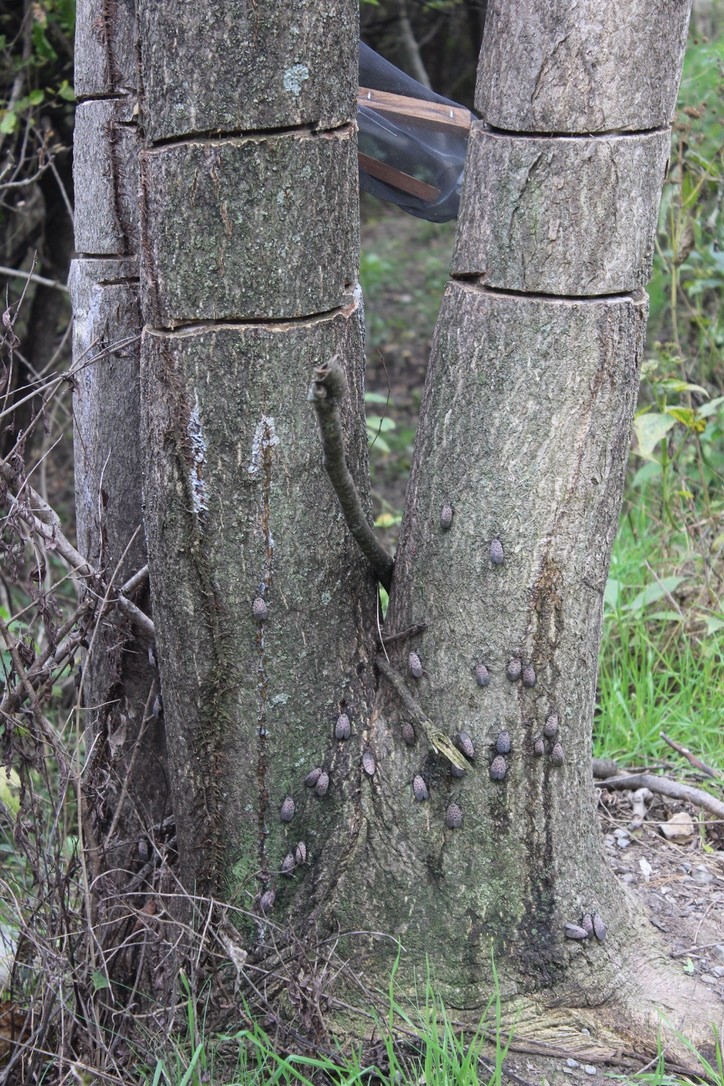
Why are we concerned about spotted lanternflies?
It is a newly arrived invasive pest that prefers and likely needs weedy Ailanthus trees for part of its life cycle but feeds heavily on many other trees, shrubs, and vines, like red maple, silver maple, black walnut, rose bush, and grape vines, which can damage the trunks and substantially reduce the harvest of some crops, especially grapes. They also pass a sticky substance called 'honeydew' through their bodies while feeding. The honeydew coats the trunks, ground, road, and cars in a clear sticky substance that then attracts bees, wasps, and ants.
(Photo at right: Spotted lanternflies feed below the cuts of the girdled Ailanthus tree.)
For information about quarantines in effect in our area, see: https://www.vdacs.virginia.gov/press-releases-210209-spotted-lanternfly.shtml. For general information about the pest and the invasion, see the USDA-APHIS website: https://www.aphis.usda.gov/aphis/resources/pests-diseases/hungry-pests/the-threat/spotted-lanternfly/spotted-lanternfly.
Bottom left: Fresh spotted lanternfly egg cases. Top right: Spotted lanternfly older/dried egg cases. Bottom right: Cluster of several fresh spotted lanternfly egg cases.
